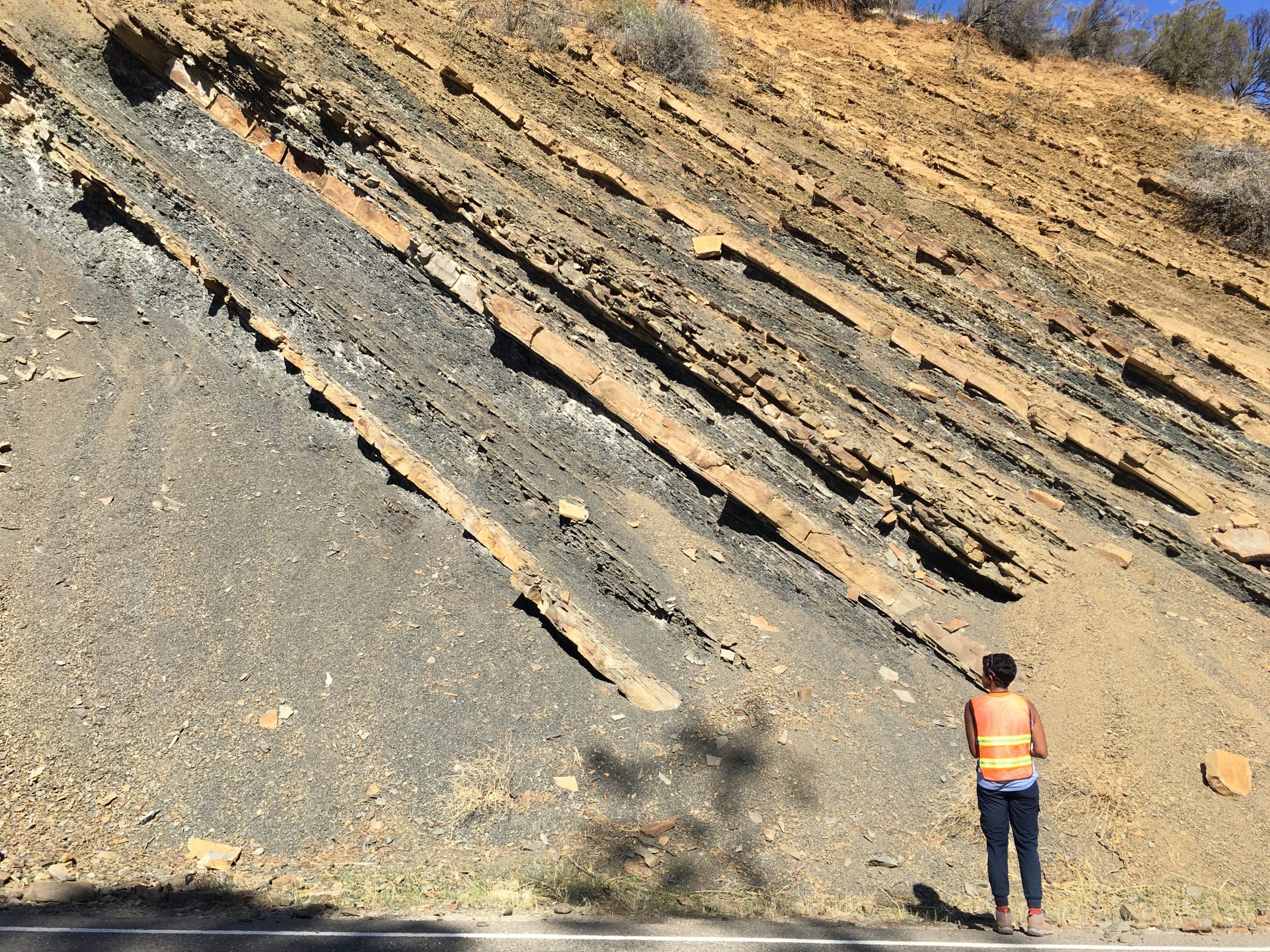New-Look Field Class Explores Sedimentology and Stratigraphy in California
By Matt Malkowski, Assistant Professor, Department of Earth and Planetary Sciences




Last October we took a 5-day tour of deep-water sedimentology and stratigraphy in northern and central California. The trip made up the field seminar component of GEO 383: Clastic Depositional Systems, now taught by me, Matt Malkowski, one of the Jackson School’s new assistant professors, and GEO 383U: Dynamic Field Stratigraphy, taught by Prof. Brian Horton.
Horton and I led a group of 10 students along a suite of textbook outcrops that take students on a complete transect through a deep-water depositional system, from the head of a submarine canyon to the deposits of the deep abyssal plain. Along the way, we focused on observing, describing, and synthesizing facies to infer depositional process. The systematic transect allowed students to compare and contrast observations at each location and make predictions about what they will see at the next, “downslope” location. We also discussed the progression of outcrops in the context of larger-scale tectonic, climatic and eustatic drivers contributing to stratigraphic changes along the way.
We visited some spectacular exposures along the scenic California coast and in the Coast Ranges further inland. Some highlights included the Pigeon Point Formation along the San Mateo coast, canyon fill strata at Pt. Lobos, a transect of the Cretaceous Great Valley Group, and the grand finale at the Marin Headlands. While most of the trip emphasized Cretaceous to Eocene stratigraphy, we also stopped at the Monterey Bay Aquarium Research Institute to get a behind-the-scenes tour of the tools and techniques that geologist Charlie Paull and his team use to study modern sedimentary processes in the Monterey Submarine Canyon.
We were pleased to hear that students found the field experience greatly helped their learning. This is a selection of their feedback:
“I thought the field trip was the most effective teaching tool. Seeing the rocks and placing myself in the depositional environments allowed me to make those in-class connections. The field notebook and field report were also very effective teaching strategies.”
“The aspect of the course that was the most effective was the course field trip. While pictures and lectures are a great way of teaching the material, it cannot be compared to seeing what we talk about in class in person. Going on the field trip put things in a better perspective regarding the class content.”
The University of Texas at Austin
Web Privacy | Web Accessibility Policy | Adobe Reader

